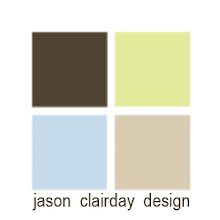Deciding what to do with this stuff can be a challenge: how much to show, how to show it, and where to put it. When thinking about your own collection, think of different ways to categorize it, such as material, motif, size or color. Let me break it down for you using an example.
Let’s say I collect candlesticks. I have three distinctly different types: wooden, ceramic and crystal. The wooden candlesticks are all different sizes and are all brightly colored. The ceramic ones are all different sizes, but have different motifs: some are painted with geometric patterns while others are floral, but all have a white or off-white background. The crystal ones are, well, just crystal.
I would say that you have to display these candlesticks in three different areas because the materials they are made from are very different and when displayed all together, they could be a little assaulting on the eyes. Similar objects garner more attention and appreciation when they are placed together. Otherwise, your collection of candlesticks might look like you are having a garage sale in your living room.
Ah, but fine readers, I can already hear your next question: what about the ceramic candlesticks with the two very different motifs? Not a problem. They can be displayed together because they share certain traits: same material and background color. In fact, their having different patterns is a good thing–the geometric patterns shake things up a bit and give your eyes a break from all those flowers.
Now that we have sorted our candlesticks into neat little piles on our living room floor, how and where do we put them? The where is a little tricky for me to answer, as I am not in your home, but good place to start are side tables, coffee tables, above the fireplace, down the center of your formal dining room table, shelves, or that old piano in your parlor.
The “how” is the more interesting question. Let’s again use one of my illuminating examples. Say I have a fireplace. I can choose to display one set of my candlesticks in two ways.

The first option is to display them all along the fireplace mantle, as seen in the sketch above. I have varied the heights from left to right to add interest. I personally like to start and end with something shorter, but that is a matter of taste. Try also not to create a pattern with the heights – it should look as random as possible.
The other possibility looks like:

Here, I have created a cascading effect using the height of my candlesticks. I balanced the other side of the mantle with a piece of art, so that my fireplace does not look it is going to tip over. This is a particularly apt solution for a smaller collection. You can achieve the right proportions here by approximating thirds: one third candlesticks, one third painting, one third white space. A good rule of thumb when decorating or designing a space: asymmetry rocks! It adds visual interest and stimulates the eye.
Collections are often very personal, and it’s far too easy and tempting to display them in ways that will make a house resemble a cluttered thrift store. We can sort and edit our collections into parts that make sense and group these parts in ways that are visually coherent and interesting. This way, we can shed the thrift-store look and replace it with a mini art gallery or museum display of which we can be proud.

Jason, very helpful entry. This will come in handy as I try to find appropriate spots for my tea pot/tea cup collection. Some are modern, some are older and delicate; sounds like I should separate them rather than leave them all on the same shelf.
ReplyDelete